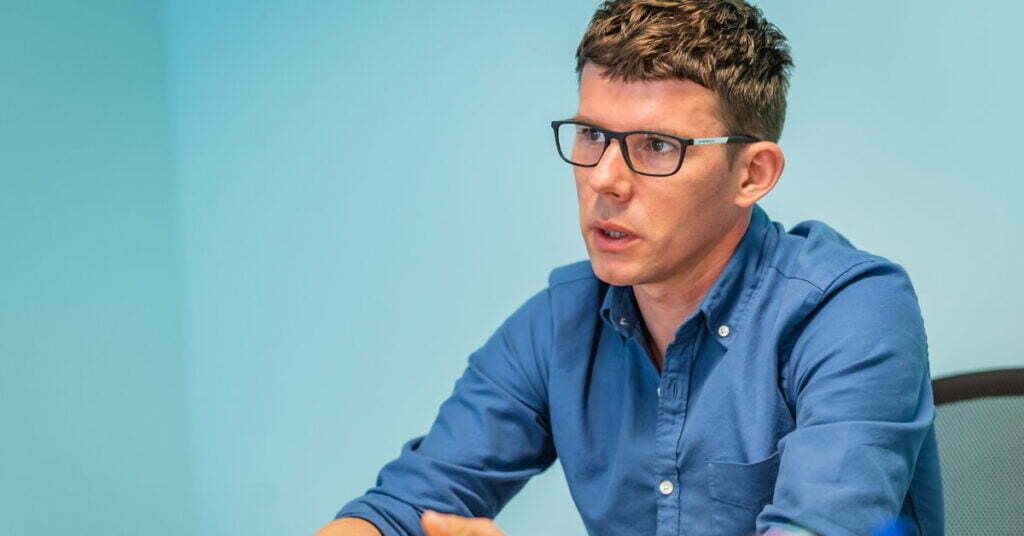Jeni Fahy, co-founder of health tech startup Wellory
Building a product is hard. It’s something even the most successful companies can still easily bungle. So at an early stage, it may seem like a mission impossible. There are so many ways to mess it up, yet only one to do it right. These are some tips from experienced product-builders.
Lessons from building 100 products
Chances are you’ve heard the wisdom from Thomas Edison: “I have not failed, not once. I’ve discovered ten thousand ways that don’t work.” That’s very cute for a motivational poster. But as a startup building a product, you don’t get 10,000 new chances. You need to get your product up and running and you need to get it right.
Get to know the amazing finalists here
Product Studio Tapptitude has built products for more than 100 startups. So if anyone has learned what it takes to make a product succeed, it’s them. Luckily, they don’t mind sharing their wisdom. These 5 essential lessons might be too long for a motivational poster, but work wonders when you have to get stuff done.
1: (In)validation is where it starts
Gabriel Dombri is the CEO of product studio Tapptitude. Over the years, he has helped over 100 startups bring their product to market. In that time, they’ve iterated the process for building a successful product. “The last few years we have focused on two core things. De-risking the product investment of the startup team first, then delivering product iterations that help users solve a painful problem for them, on a technical foundation that can be easily scaled.”

According to the product-builders at Tapptitude, it all starts with validation. They found the most inefficient way to find out your product is not needed on the market, is by building and launching it. It can save you a lot of time and a small fortune if you figure that part out as early as possible. Talk to potential users, try to understand their pain points. Estimating the size of the market for your product and taking a close look at competitors to see what you can do differently will help you along.
Building something simple, before moving to a custom-built MVP, usually works best. That’s how they did it at Wellory, a platform that connects nutrition coaches and customers who want to improve their body shapes. In their first iteration of the product, the co-founders Emily Hochman and Jeni Fahy (pictured on top of page) tested their core product value proposition using an off-the-shelf SMS service.
That was a proper MVP that allowed them to validate both desirability for the solution and prove value by having the customers pay for the service. Similarly, UK delivery service Oxwash built their delivery service with third-party web services to get the business running locally to generate their first revenue.
2: UX design is all-important
When you do get to design an MVP, it is important not to skimp on the design. Getting the thing to work is easy, Tapptitude learned. Getting the UX to flow, the interaction to be frictionless and the interface to provide the user with the right feedback is the tricky part. Devise an experience that is not just about buttons and functions. Build less if you have to.
Wellory’s Jeni Fahy knows from experience that small design improvements can require a lot of hard work, but are very important. “We’ve learned that sometimes the smallest design decisions can be the most powerful ones. Something might ‘work’ or ‘make sense’, but testing a bit further, asking a few more questions, and spending a little more time thinking about how users will engage with a feature can help uncover a much more powerful iteration.”
“Continuously challenging assumptions throughout the design process and leaning into user feedback helps us make more of those small-but-mighty design decisions to ultimately drive value and build smarter”, says Fahy. It paid off. Not only is Wellory’s app a success, it’s also recognised as one of the best-designed apps of this year.
3: There is a sweet spot in analytics
Having just a nice design won’t get you to the finish line though. You need to know everything the user does with your product. But it turns out many founders don’t think about setting up a metrics infrastructure early on. This leaves them blind in their journey, and makes the road to success a bumpy one.
But having a lot of analytics in place also won’t guarantee a positive outcome. Tapptitude notices it all depends on what product you’re building. Are you building a routine forming product? Then measure retention and active usage. Are you building a social network? Then measure the intensity and strength of user connections, and how deep the experiences created can be.

“Founders tend to believe that they’ll figure out what works easily”, says Ioana Furtună. She is a product manager at Tapptitude and has closely worked with up and coming startups launching their products. “The more complex the product, the more complex and expensive the analytics tech stack is. We see that without a full overview of acquisition, activation, engagement, retention and revenue in the funnels, it’s hard to make good decisions on what works and what doesn’t and from there how to scale a product.”
4: Keeping close eye on cash is key
When you think about scaling, you’re already looking at the future. You should do the same when managing your company’s money. CB Insights says that running out of cash is the second most common reason why startups fail. Remember you’re not just building a product: you’re also running a business.
“When we started as a product studio, we were open to working with founders who had bootstrapped budgets. But we’d see them run out of money, and their startup would stagnate or close down”, remembers Gabriel Dombri. “In the last couple of years, we encouraged founders to commit to their product full-time, and raise the right amount of money early on, so that they will have a budget to cover a 12-month runway. Those 12 months are the death zone, the absolute critical period for going towards product-market fit, therefore, survival is key.”
He emphasises that this includes the cost of an MVP, duplication to another platform or iterations, go-to-market and marketing costs, third-party platform costs, and some buffer to bridge follow-up financing rounds.
5: Fun teams find more success
Building a product, launching it and making it a success can feel like you’re running a marathon. Something you can’t keep up if you don’t love what you’re doing. That also means you need people around you that believe in the vision and know how to have some fun along the way.
Read also: Tapptitude’s Daniel Spijker on how to build an MVP that doesn’t suck
Decide whether you want to work with a product studio or build your own team. The former offers the advantages of having an established and experienced team that pushes you to move faster, work as hard as any in-house team would. The latter means you can build at your own pace, create your own culture and keep the spent on salaries local.
The most successful companies combine the advantages of those two, according to Tapptitude. They take on the product studio’s team as their own to build a common culture and grow trust. “We’ve had companies putting us in their pitch deck as if we were part of their team,” says Dombri. “And we’d be wearing their swag whenever we’d work for them. It’s the best of both worlds, ending up with a great product.”
How partnering up with Salesforce helped him succeed!





![Read more about the article [Funding alert] Fintech startup Kissht raises $80M, launches millennial-focused offering](https://blog.digitalsevaa.com/wp-content/uploads/2022/06/Kissht-1654686593525-300x150.png)


![Read more about the article [Startup Bharat] Indore-based MomsKart is helping over 500 mompreneurs sell homemade food products](https://blog.digitalsevaa.com/wp-content/uploads/2022/05/Momskartfeature-1651762038055-300x150.jpg)

